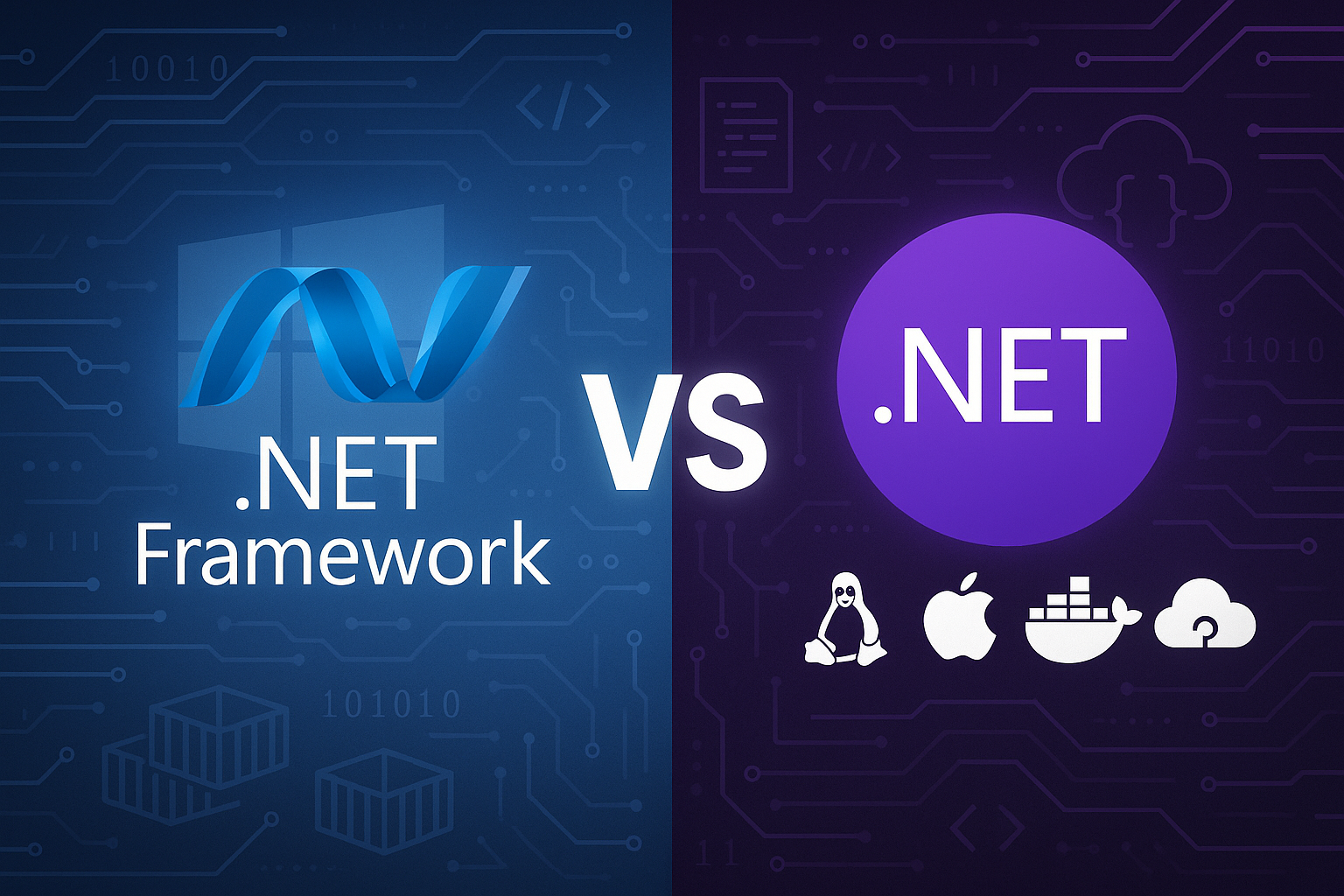.NET vs .NET Framework – What to Choose in 2025?
The .NET world has undergone a massive transformation in recent years. If you're just starting with Microsoft technologies or planning to modernize your applications, it's easy to get confused between the names: .NET, .NET Core, .NET Framework... In this post, I'll explain the differences and help you decide when to choose which technology.
.NET Framework – The Classic Windows Platform
.NET Framework has a history dating back to 2002. Over the years, it became the foundation for Windows business applications – from WinForms, through WPF, to ASP.NET Web Forms and WCF.
However, its architecture has limitations:
- Runs exclusively on Windows
- Is closed-source software
- Installed globally in the system (no side-by-side versioning)
- Based on older configuration technologies (e.g.,
web.config, MSBuild)
The current and final version is .NET Framework 4.8. Microsoft maintains it primarily for legacy applications – new features are no longer being added.
Modern .NET – The Successor and Future of the Platform
When we talk about .NET today, we mean the evolving line from .NET Core 1.0 (2016) to the current version .NET 9 (2025). This is an open-source, cross-platform, and dynamically developing platform that combines the best features of its predecessors.
Key Features of Modern .NET:
- Cross-platform – runs on Windows, Linux, macOS
- Open source (GitHub)
- Modern SDK-style projects
- ASP.NET Core – one of the fastest web frameworks
- Container support (Docker, Kubernetes)
- Side-by-side deployment – different .NET versions can run alongside each other
- JSON configuration + extensive DI and configuration system
- Short release cycles (new version every year)
Performance and Scalability
In benchmarks, especially in the context of web applications, .NET 6/7/8/9 decisively outperforms the classic Framework.
Thanks to the optimized runtime and lightweight architecture, ASP.NET Core applications handle more requests with lower resource consumption.
Technical Examples
Modern SDK-style project:
<Project Sdk="Microsoft.NET.Sdk">
<PropertyGroup>
<TargetFramework>net9.0</TargetFramework>
</PropertyGroup>
</Project>
Legacy .NET Framework project:
<Project ToolsVersion="15.0" ...>
<PropertyGroup>
<TargetFrameworkVersion>v4.8</TargetFrameworkVersion>
</PropertyGroup>
</Project>
Minimal API in .NET 6+:
var app = WebApplication.CreateBuilder(args).Build();
app.MapGet("/", () => "Hello from .NET 9!");
app.Run();
JSON Configuration:
var config = new ConfigurationBuilder()
.AddJsonFile("appsettings.json")
.Build();
string value = config["MySetting"];
Summary
If you're creating new projects, the choice is simple – go with modern .NET (6/7/8/9).
You'll gain community support, modern APIs, cross-platform compatibility, containerization, and performance.
If you're maintaining legacy Windows applications, .NET Framework 4.8 is still supported, but only for scenarios requiring old technologies like Web Forms or WCF.
